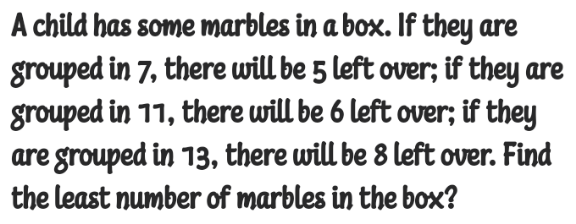
Number TheoryQuestion and Answers: Page 9
Question Number 134393 Answers: 0 Comments: 0
Question Number 134327 Answers: 1 Comments: 0

Question Number 134267 Answers: 1 Comments: 0
Question Number 134252 Answers: 1 Comments: 0
Question Number 134208 Answers: 0 Comments: 0
Question Number 134069 Answers: 1 Comments: 2
Question Number 134037 Answers: 1 Comments: 0

Question Number 133897 Answers: 2 Comments: 0
Question Number 133761 Answers: 1 Comments: 0
Question Number 133757 Answers: 1 Comments: 0

Question Number 133611 Answers: 1 Comments: 0
Question Number 133412 Answers: 1 Comments: 0
Question Number 133320 Answers: 1 Comments: 0
Question Number 132386 Answers: 1 Comments: 0
Question Number 131497 Answers: 0 Comments: 1
Question Number 131484 Answers: 3 Comments: 0
Question Number 131196 Answers: 1 Comments: 0
Question Number 130727 Answers: 2 Comments: 2

Question Number 130109 Answers: 3 Comments: 0
Question Number 128740 Answers: 1 Comments: 0
Question Number 127979 Answers: 2 Comments: 0
$$\:\:\left(\mathrm{1}+{i}\right)^{\mathrm{2020}} \:=? \\ $$
Question Number 127940 Answers: 2 Comments: 0
Question Number 127610 Answers: 2 Comments: 0
Question Number 127111 Answers: 3 Comments: 0
Question Number 126682 Answers: 2 Comments: 0
Question Number 126677 Answers: 1 Comments: 3

